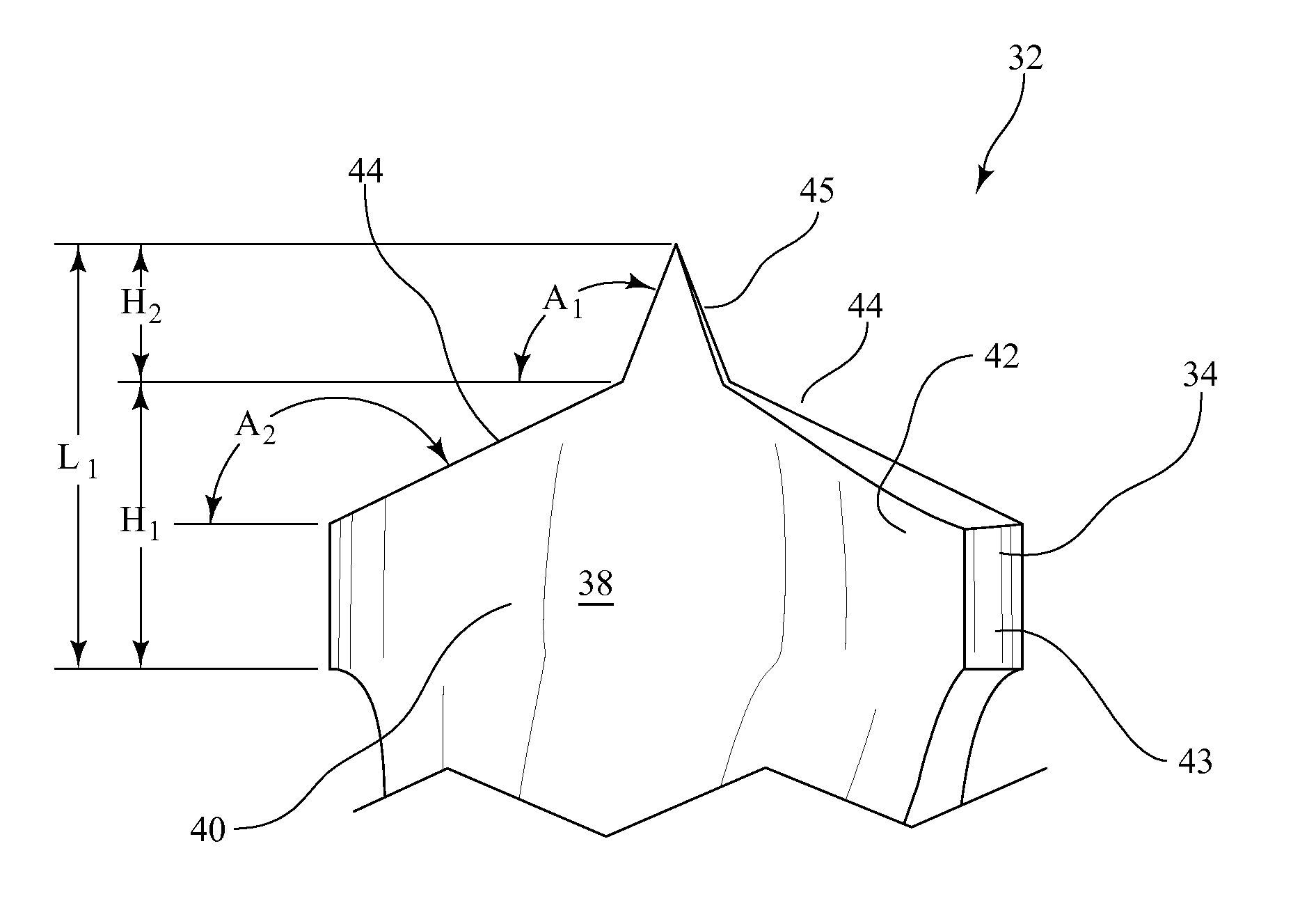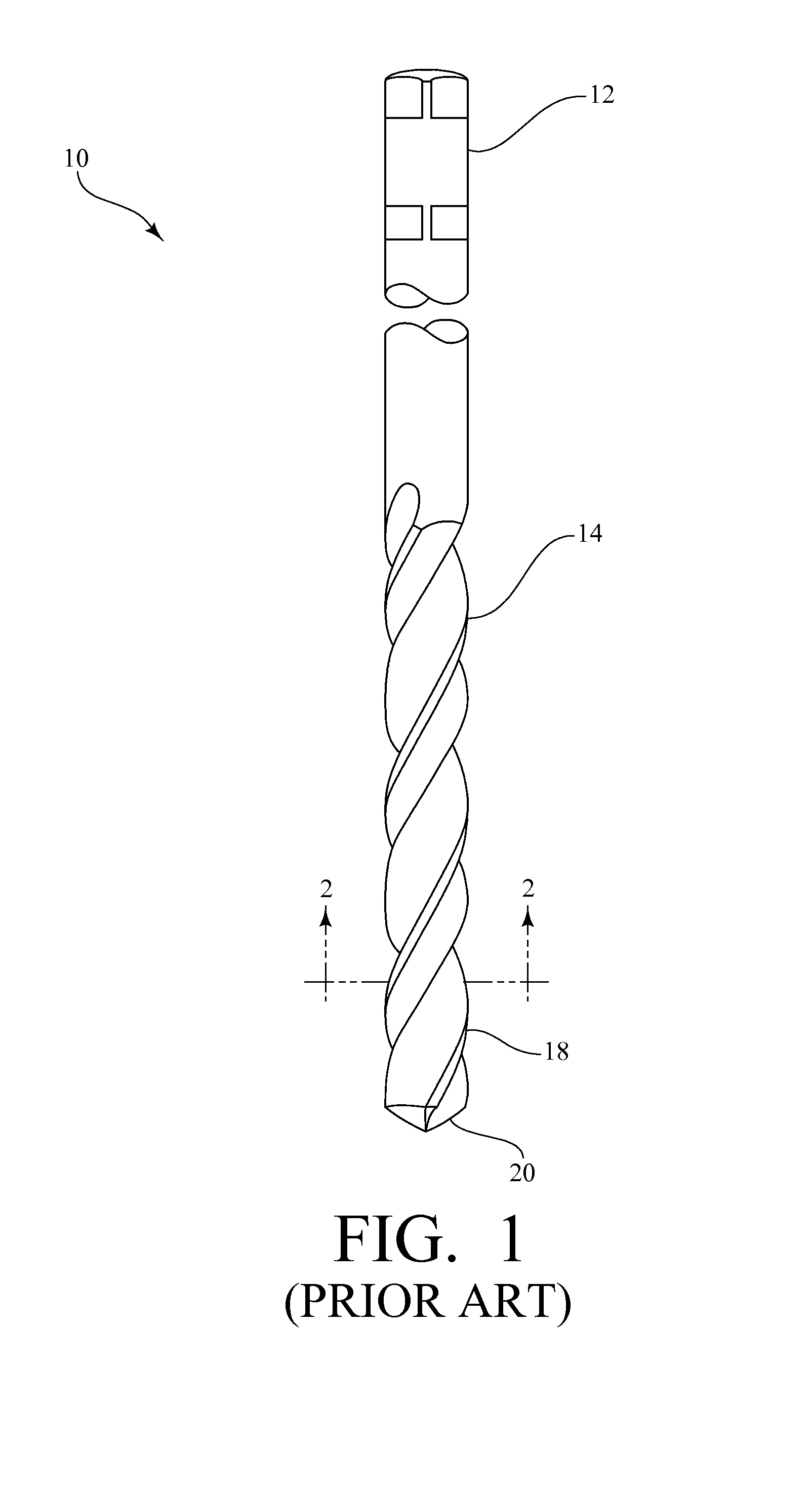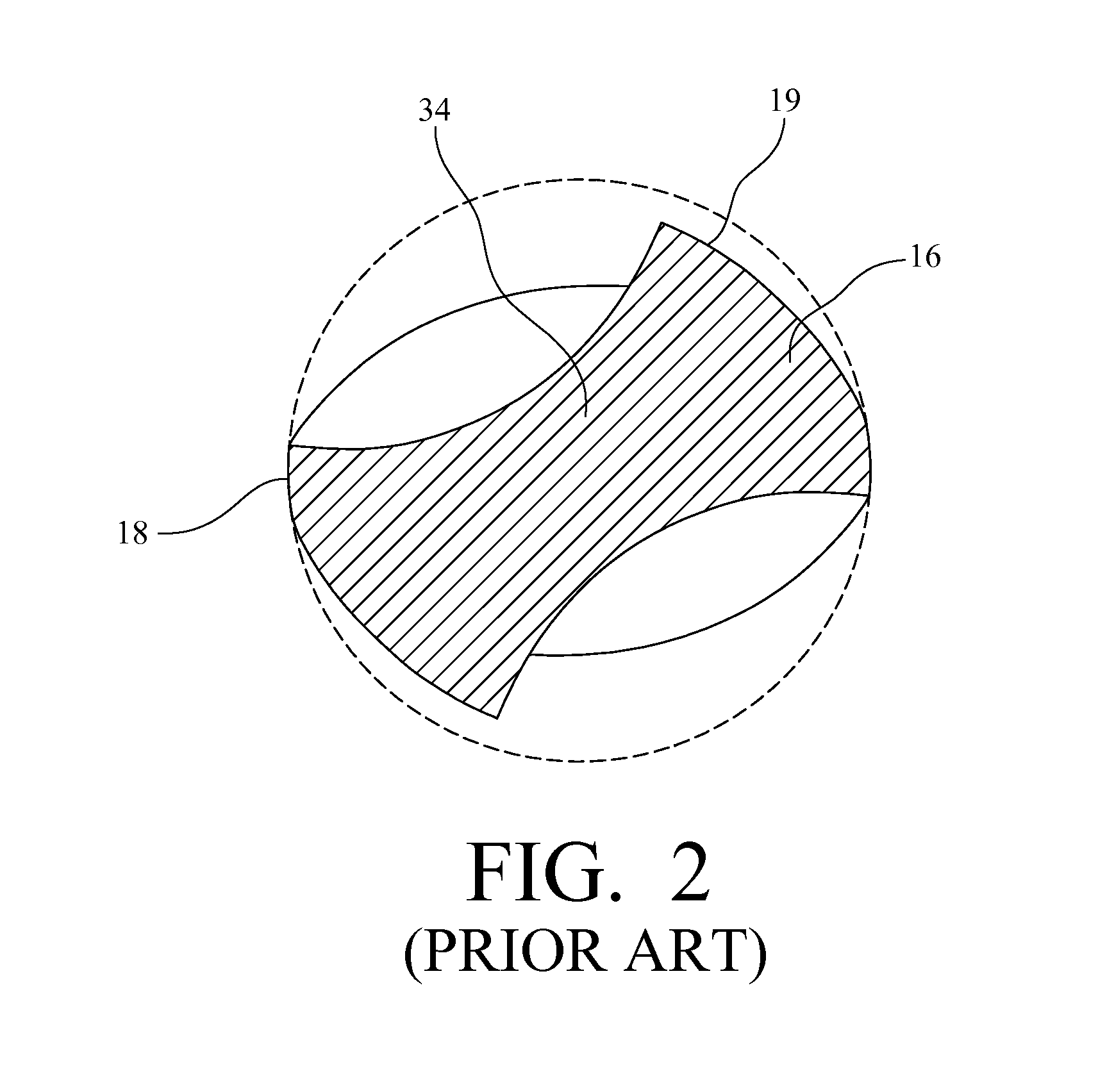Surgical Drill Bit
a drill bit and surgical technology, applied in the field of surgical drill bits, can solve the problems of drill bit failure inside the bone, increased temperature, and surgeons' bone problems, and achieve the effect of less subject to wandering, minimizing deficiencies, and reducing the number of subjects
- Summary
- Abstract
- Description
- Claims
- Application Information
AI Technical Summary
Benefits of technology
Problems solved by technology
Method used
Image
Examples
Embodiment Construction
[0025]As illustrated in FIG. 1 and FIG. 2, a conventional prior art surgical drill bit shown generally as 10 consists of a drive section 12 for attachment to a power tool and a fluted section 14 comprising two opposed helical flutes comprising lands 16 extending radially to the axis of the drill bit. As shown most clearly in FIG. 2 the leading edges 18 of the lands 16 are cutting edges for contacting and cutting away bone being drilled. The trailing portion 19 of each edge is sloped slightly inwardly to define body clearance between the wall of the bore and the surface 19 for the collection and removal of bone chips. At the distal end of the drill bit the opposed cutting edges 18 are inwardly sloped to form a drill point 20. The outside diameter of the fluted section 14 is maintained at nominal value along the length of the fluted section and the edges 18 of the lands 16 are in contact with wall of the bore being drilled. The contact between the cutting edges 18 and bone being drill...
PUM
| Property | Measurement | Unit |
|---|---|---|
| angle | aaaaa | aaaaa |
| angle | aaaaa | aaaaa |
| angle | aaaaa | aaaaa |
Abstract
Description
Claims
Application Information
 Login to View More
Login to View More - R&D
- Intellectual Property
- Life Sciences
- Materials
- Tech Scout
- Unparalleled Data Quality
- Higher Quality Content
- 60% Fewer Hallucinations
Browse by: Latest US Patents, China's latest patents, Technical Efficacy Thesaurus, Application Domain, Technology Topic, Popular Technical Reports.
© 2025 PatSnap. All rights reserved.Legal|Privacy policy|Modern Slavery Act Transparency Statement|Sitemap|About US| Contact US: help@patsnap.com



